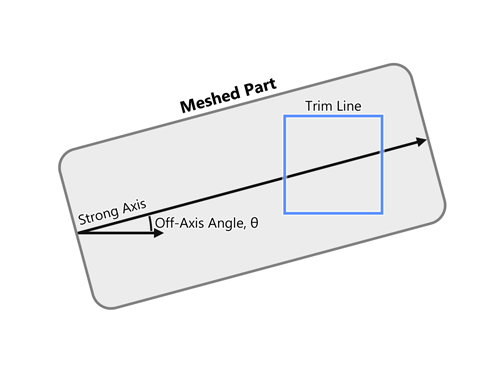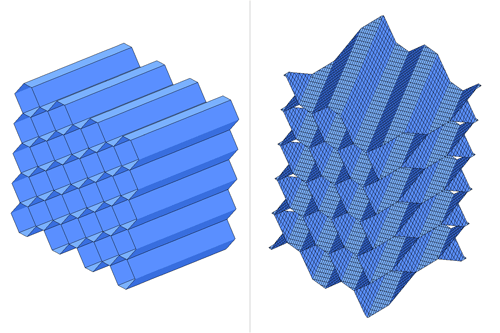Honeycomb cell structures are popular among weight conscious designers due to their high strength to weight ratio. In the automotive space, aluminum based honeycomb structures are widely used to represent barriers to simulate a controlled energy absorption. Honeycomb structures are highly anisotropic and requires adequate testing to characterize them. This post focusses on the characterization of the off-axis angle dependency of the yield stress. It is well known that honeycomb structures are stronger along the direction of the cell axis and is considerably weaker in the other two orthogonal directions. The transition of the strength from the strong axis to the weak axis is known to be non-linear and can be captured by using LCA in material model MAT_126 . A typical curve describing the average yield stress as a function of the off-axis angle is shown below.
Establishing the yield-stress $latex sigma_{yield}$ dependence on the off-axis angle $latex theta_{off}$ requires tests and in some cases obtaining the values can be quite difficult. In such cases, it is possible to conduct these tests numerically using LS-DYNA to obtain the trend of the off-axis relationship in a very cost and time effective way. The numerical tests are conducted by first preparing a honeycomb specimen which is meshed using shell elements that accurately represents the cells in both the dimensions and the thickness. The shells can be modeled using an appropriate material law to represent the actual material with optional failure parameters. The highlight of this process is in the creation of the specimens for the off-axis angles. Off-axis specimens can be created using the PTRIM option in LS-PREPOST which works by trimming any given component based on the surface generated by a series of IGES lines. A sample part using a IGES trim curve is shown below where the shell structure is rotated by the off-axis angle.
Below is an image of honeycomb shell structure and the corresponding off-axis angle specimen at $latex 30^o$ angle using the PTRIM option in LS-PREPOST.

















